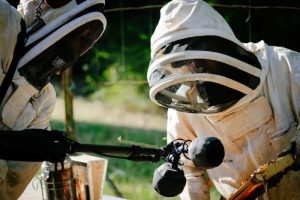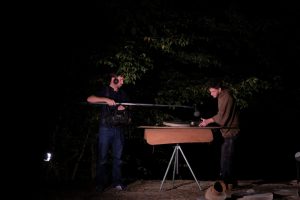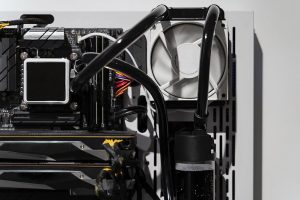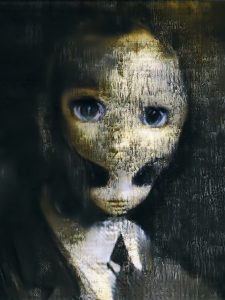I’m in London for the RCA Degree Show. It’s the biggest show ever as they gathered all the departments under one huge tent in the park by the Albert Memorial. I wonder how much of it i’ll be able to see. Yesterday evening i managed to get all the information i wanted about only 2 projects before being kicked out of the place by the guys who had to close the place.
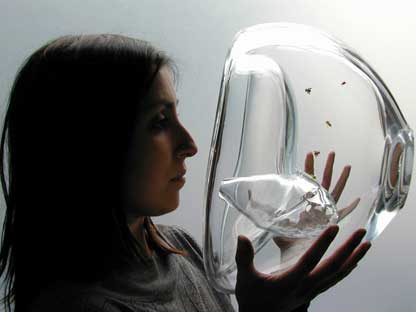 Susana Soares studied bees and in particular the way they can be trained to use their smell and detect pretty anything including bombs and landmines.
Susana Soares studied bees and in particular the way they can be trained to use their smell and detect pretty anything including bombs and landmines.
Bees are trained using Pavlov’s reflex to target a specific odour and their range of detection includes pheromones, toxins and disease diagnosis. Not only can they roam large distances in search of what you want them to sniff out, it takes only a few minutes to train them, unlike dogs whose training can last up to one year.
Their behaviour can be conditioned by rewards such as sugar-water. They are placed in straw-like containers and made to smell a combination of, say sugar with tiny residues of TNT. That’s it! The bees’ keen sense of smell will then associate the odour of explosives with food.
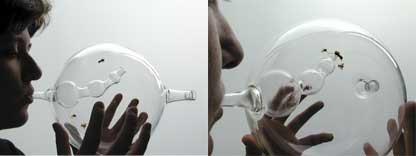
In her BEE’S project, Susana would use the insects as biosensors, harnessing their extroadinary sense of smell to detect diseases such as lung cancer, skin cancer and tuberculosis. Besides they could spot the problem at a very early stage much better than machines. They could even detect if a woman is pregnant which i find much more appealing and elegant than the usual method that involves peeing on a piece of plastic.
The designer visited the London Beekeepers Association and used chewing gum in her tests with the bees. She then located a glass master and had glass objects blown.
People would breathe in the glass diagnosis tools where bees are kept for the short period of time necessary for them to detect general health and fertility cycles. To ensure that the mouth never gets in contact with the insect, there are two different spheres, the bee’s smell being strong enough to sniff out what you breathe through glass. Bess would rush into the tubes that lead closer to the breath when they detect any disease they associate with food.
In her scenario, people would receive trained bees by the post (nothing uncommon here apparently), proceed to the breathe test than release the bees.
BEE’S explores how we might co-habit with natural biological systems and use their potential to increase our perceptive abilities. We have always co-existed with these systems, but their potential was unknown.
This project is based on ongoing research that provided the knowledge to enable new interactions.
The aim of this project is to develop collaborative relations between scientific and technological research, beekeepers and design, among others, translating the outcome into systems and objects that people can understand and use, engendering significant adjustments.
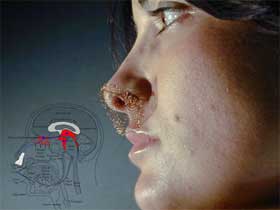 Susana was showing a second project which explores smell as well and forsees the possibility to enhance under-developed (or create) organs of perceptions. Sniffing Others is a development of the Genetic Trace project she exhibited at the interim show, back in February.
Susana was showing a second project which explores smell as well and forsees the possibility to enhance under-developed (or create) organs of perceptions. Sniffing Others is a development of the Genetic Trace project she exhibited at the interim show, back in February.
Smell has become a lost perception:
– in humans the vomeronasal organ regresses during development (in mammals this organ is used to detect pheromones).
– half of our smell receptors have fallen into disuse though if stimulated we could increase our smell perception.
Besides, research has demonstrated that women taking the contraceptive pill decrease their ability to detect odours, prefering genes similar to their own, and eventually choose a mate who is not genetic suitable.
The new organs of perception would allow us to sniff out genetically compatible mates.
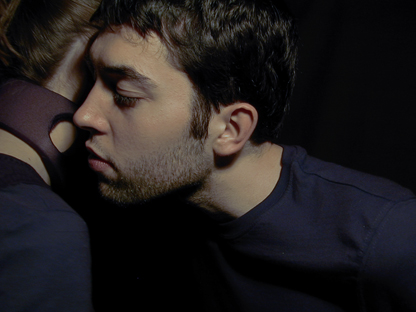
Smell augmentation would be developed gradually through the use of several accessories. Not only new technologies would have to be developed to assist humans in fine-tuning their nose but notions of what is socially acceptable would have to be re-defined. It’s not regarded as elegant today to smell the armit of the cute guy standing by you at the bar, right? One of the first step would be to wear the kind of collar shown on the picture above, a kind of sexy accessory that invites your partner to come closer and sniff you. As time passes, people might walk around wearing nose plugs that stimulate the sense of smell, these objects look like delicate pieces of jewellery but later, much later, as human sense of smell is getting stronger, it will be socially acceptable to let long hair grow out of your nose.

